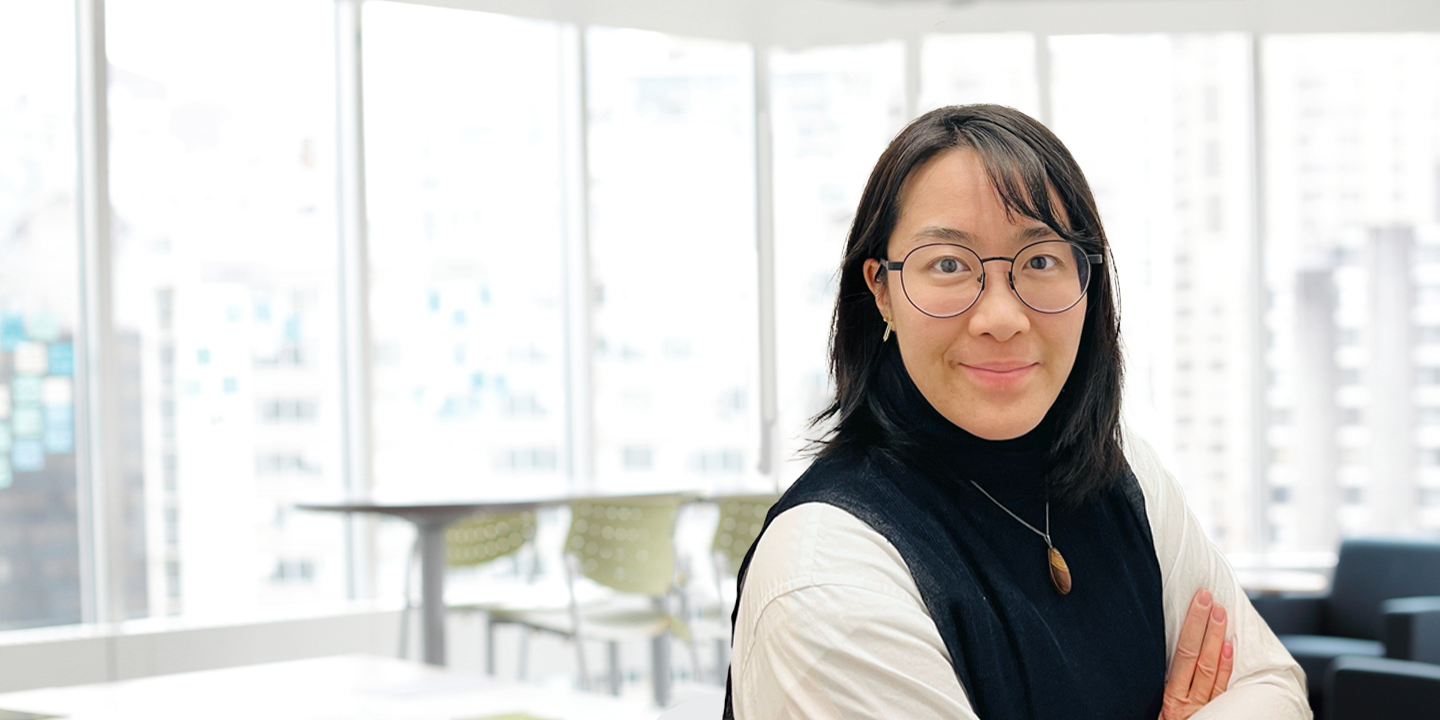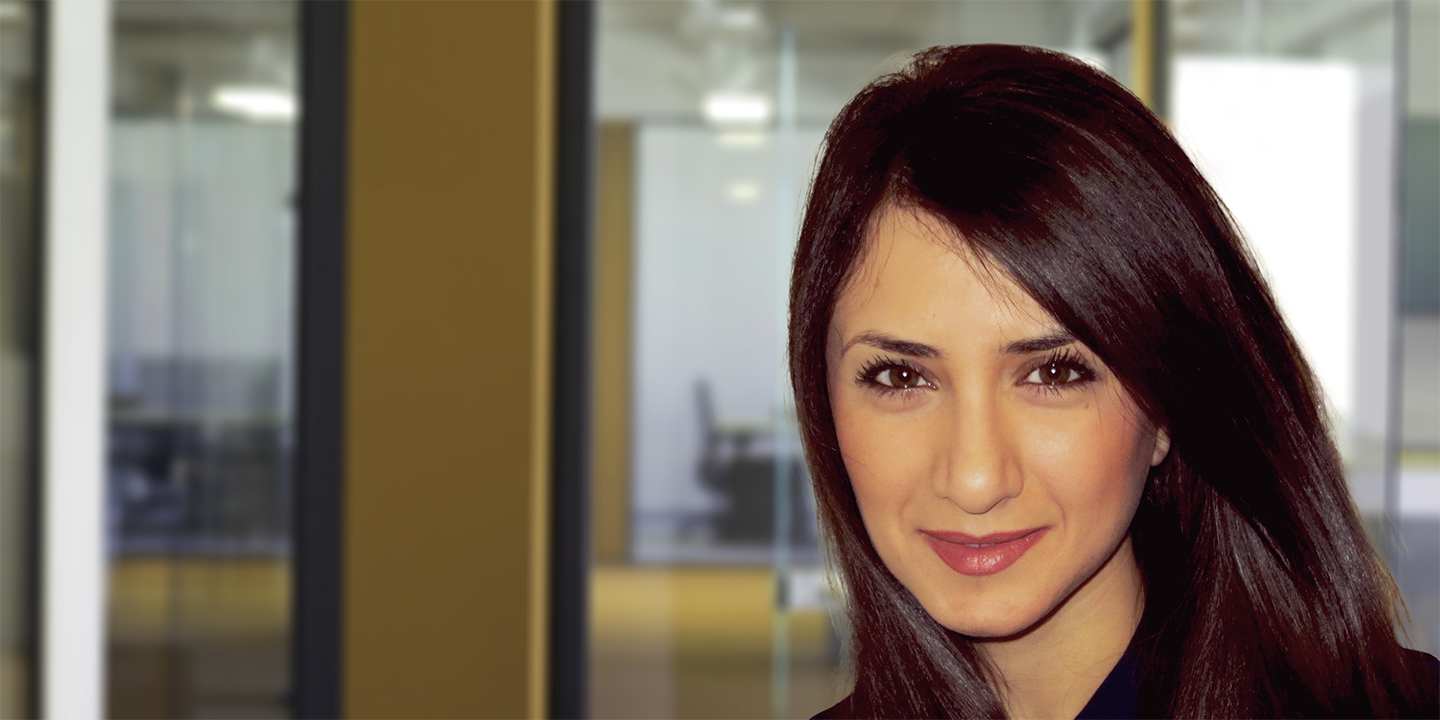Only 17 per cent of professional architects in Canada are women [1]. In acknowledgement of International Women’s Day and as part of our efforts to #breakthebias, we are showcasing some of the exceptional women architects and designers at Kasian. Throughout the month of March we’ll showcase how these women have overcome obstacles, created impactful designs across Canada, and continue to advocate for gender equity.
Karen Li, Project Architect
Karen Li has nearly 10 years of experience passionately pursuing design and creating engaging and transformative spaces. Born in Hong Kong and raised in Canada since age eight, Karen thrives in collaborative environments and appreciates learning about diverse perspectives and the enriching learning opportunities they provide.
She has a Bachelor of Architectural Studies and Master of Architecture, both from the University of Waterloo. After completing two co-op terms with us in 2010 and 2011, Karen joined Kasian full time in 2014.
Her experience ranges from complex programming and health care projects, to institutional and commercial projects in the residential, office and hospitality realms. Karen has recently found a new passion for the senior living sector and creating spaces that honour, respect, and support our elderly community and their reverence within our culture.
This is her experience as a woman in architecture.
Q and A
Q: What inspired you to get into architecture and design?
KL: I’ve always explored different art media to see what I could learn. I’ve painted, sculpted, and sketched. Even if I wasn’t good at it, I always enjoyed the process. My parents wanted me to choose a profession that I would enjoy and have a passion for and because I was interested in both science and art, architecture was a great mixture of both.
Architects are the storytellers of our time. They build things that last; that tell a story about the period of time when it was built. I wanted to be part of that process, so I could tell the story of my time.
Once I started thinking about it in this way, and the influence I could have on society and culture, I became more passionate about the profession and inspired by all the things I could do to guide people’s experience of space.
Q: Can you tell me about some of the more meaningful projects that you’ve had the opportunity to work on?
KL: I’ve worked on condos, retail, and commercial spaces for most of my career so far.
I’ve also worked on some fun projects in China, before joining Kasian, that have been very different from the projects I’ve worked on in the U.S. or Canada. I once designed an egg museum in Beijing to promote the country’s agriculture. I’ve also worked on refurbishments and retrofits to convert old architecture and streetscapes into more modern retail areas in Beijing.
However, in recent years, I’ve had the opportunity to work on senior living projects, and these kinds of projects have been incredibly impactful. I always want to do something more for the community.
There are more needs for seniors’ living facilities than ever before. I’m focused on designing spaces for seniors, so people don’t feel trapped in these residences. I’m fascinated by this idea of creating comfortable flexible homes for seniors in these facilities. I hope to design more outdoor spaces, gardens, and different lounge spaces so residents can spread out. It’s very meaningful work for me.
Q: What do you think about the fact that only 17% of architects in Canada are women?
KL: That’s interesting. When I was in school, over 50% of our class were women. It’s unfortunate to hear that it’s so low. So many women graduated with me, but I don’t know how many actually became an architect.
I’m happy to see more female leaders and designers here [at Kasian]. This profession is stressful and hard at times. Maybe that’s why people deter from pursuing a career in architecture or design because of the stress. I’d like to encourage more women to come into this profession. There is a change occurring. Things are getting better.
Q: Can you tell me about a time when you experienced bias as a woman in architecture?
KL: For me, it’s probably my own mental biases that affect me. When I go onto a male-dominated site, I question myself or feel like I shouldn’t say too much because I don’t want to say the wrong thing. I would get intimidated. I know this isn’t the best way to act because everyone is equal, and we should be able to say whatever we think.
I suppose there have been calls and meetings where people have tried to talk over me. I don’t know if it’s because of an unconscious bias, or if it’s just situational. It’s hard to tell.
Everyone should be respectful of others no matter what role they’re in.
Q: Are there any women in architecture or design who inspired you along your journey?
KL: I’m inspired by Japanese architect Kazuyo Sejima. I admire her architecture, ideology, and style.
I’m learning a lot from my current project manager, Nancy Wilson. She’s really wonderful in the way she presents herself to our clients. She’s shown me what it means to be a strong female in this field. She’s my role model right now and I’m trying to learn to be more like her.
My performance manager, Brenda Lee, has been extremely supportive. We’ve worked together the whole time I’ve been here. She’s been there for me through every career problem or situation I’ve faced. She’s always been generous with giving advice and empathized with my situation.
I also have a long-time male mentor, Pochi Lu, who has taught me a lot since I was a student designer. We have worked on multiple projects together. Even when we are not working on the same projects, he has always been available to guide me and advise me when needed. He has taught me how to be a well-rounded designer and to think from multiple points of perspective. He has contributed a lot to shaping me to be the designer I am today.
Q: How has Kasian supported you in achieving your career goals?
KL: There is always someone there to reach out to and ask for support in this company.
Throughout my seven years here, I’ve been given many opportunities and responsibilities in different fields. This has opened my eyes to many possibilities and helped me become a better designer. I’ve worked with so many different people and learned a little bit from everybody. I’ve been able to observe and ask questions.
Whenever I want to continue my education, I am supported to continue to learn how to build better spaces – from energy efficiency, to passive housing, to senior living. The company has given me many opportunities to broaden my skills. They’ve also supported me when the workload gets too heavy, by checking in and providing help.
Q: As a woman in architecture, how do you experience balancing family with being game-changing architect or designer?
KL: This has always been a struggle for me. Our undergraduate education is five years, including one year of co-op, and then our masters is another two years.
I’ve put off the idea of starting a family because I felt like I needed to get my license and develop my career first. I’ve had to slow down a little bit because I chose this path. Starting a family takes time and effort, and as someone who’s passionate about my career too I don’t just want to drop it. There is that struggle. Family is very important to me, and I don’t know how to find a balance.
I’m at a point where I know whatever happens will happen. The rewards I get from this career are irreplaceable, and everyone has to work at their own pace.
Q: Do you have any advice for new grads or women looking to get into the field?
KL: Architecture school is very different from real life. I used to think when I became an architect, I could go build whatever I wanted. As a designer, I’ve learned that we’re always restricted by budgets, codes, engineers, and more. It’s important not to feel saddened by this, but to work within the restrictions as a creative challenge. That’s just the process. Not everything can be fought for every time, but maybe it can be applied to another project in the future. Be positive. It’s a gradual process.
I’d also tell new grads to get to know their peers and coworkers, so they can get comfortable saying what they want to say. It’s important for women to have a voice. It’s also important to show personality and character through your designs.
Q: What kind of work and advocacy is important for women in design right now? How would you like to see the field evolve over time?
KL: I would like to see more female architects winning awards or being featured in publications. Showcasing female achievements helps encourage other women to pursue this career.
I’m encouraged that there are more conversations about females in design, architecture, and interior design. It’s important that people hear this.
Zaha Hadid has played a major role as a woman in architecture. As woman in architecture, we should be thankful for her contributions for helping to pave this path for future female architects.
Q: What is one thing you wish you could say to your younger self?
KL: Seek balance and spend more time with family. I’ve experienced periods of time where I’ve felt drained. Having a work/life balance is very important. Pursue your career but take time to take care of yourself and to be mentally and physically happy in the process. That’s what’s needed to enjoy success.
Q: What does International Women’s Day mean to you?
KL: To give praise. We’ve come a long way from staying at home to now becoming more successful and having careers. It’s about equality and having a voice in the field. I think it’s very important to promote equality in the workplace, equality in the home, and to support each other in the process.
I feel like all of us getting together to break the bias shows that there are some successful examples out there that women are pushing the limits. We’re going to continue pushing until we become 100% equal.
It makes me happy to see that there are really successful women who have great family lives. It shows that both can coexist. Everyone can achieve that. That’s the most important thing for me.
Q: Is there anything else you’d like to add?
KL: I strive to build spaces that consider human experience and human interaction. I want to create healthy and flexible spaces for people to live in. My ultimate goal is to give back to the community. I have all this knowledge in me now and I want to help the community to live better. Eventually, I’d like to work for community housing and really help people. That’s where my heart belongs.
Karen Li has worked on the following projects:
At Kasian, we thrive in a culture of curiosity. Our clients are visionaries, passionate and courageous ― together we achieve results that make a difference to entire communities.
At the heart of what we do are our people.
If you enjoy collaborating in a vibrant and inspiring workplace and are looking for the next step in your career, we’d love to hear from you.
[1] Architect at Work, Canada (June, 2021) And the BEAT goes on: Women in Architecture
Read Next
We’d love to get to know you
Get in touch
"*" indicates required fields
Get in touch
Share


